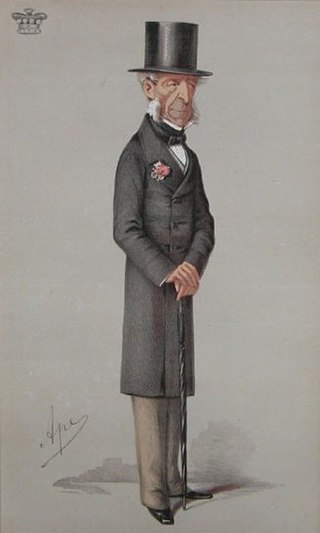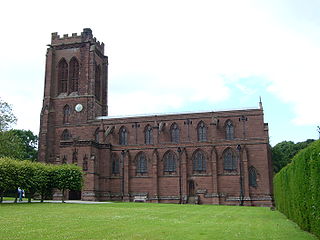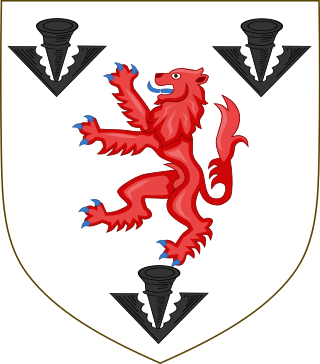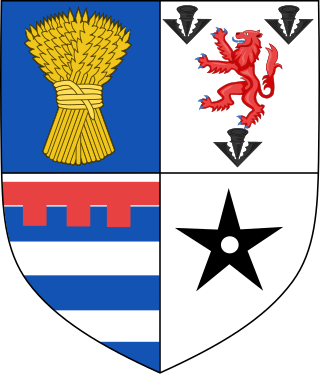| | | | | | | | | | | | Baron Grey de Wilton (1st creation), 1285 |
|
| | | | | | | | | | | | Reginald Grey
d. 1308
1st Baron Grey de Wilton |
|
| | | | | | | | | | | | | | | |
|
| | | | | | | | | | | | John Grey
c. 1268–1323
2nd Baron Grey de Wilton |
|
| | | | | | | | | | | | | | | | | | | | | |
| | | | | | | | | |
| | | | | | | | | | | | | | | | | Baron Grey of Ruthin, 1324 |
|
| | | | | | | | Henry Grey
1281–1342
3rd Baron Grey de Wilton | | | | | | Roger Grey
d. 1352/1353
1st Baron Grey of Ruthin | | King Edward III
1312–1377 |
|
| | | | | | | | | | | | | | | | | | | | | | | | | |
|
| | | | | | | | Reynold Grey
1311–1370
4th Baron Grey de Wilton | | | | | | Reynold Grey
c. 1322 – c. 1388
2nd Baron Grey of Ruthin | | John of Gaunt
1340–1399 | | Thomas Holland
Earl of Kent
c. 1314–1360 |
|
| | | | | | | | | | | | | | | | | | | | | | | | | | | | | | |
|
| | | | | | | | Henry Grey
c. 1340–1396
5th Baron Grey de Wilton | | | | | | Reynold Grey
c. 1362 – c. 1440
3rd Baron Grey of Ruthin | | Elizabeth of Lancaster
bef. 1363–1426 | | John Holland
Earl of Huntingdon
Duke of Exeter
c. 1352–1400 |
| |
| | | | | | | | | | | | | | | | | | | | | | | | | | | | |
| | | |
| | | | | | | | Richard Grey
c. 1393–1442
6th Baron Grey de Wilton | | | | | | John Grey
c. 1387–1439 | | Constance Holland
1387–1437 |
| |
| | | | | | | | | | | | | | | | | | | | | | | | | |
| | |
| | | | | | | | Reynold Grey
c. 1421–1493/94
7th Baron Grey de Wilton | | | | | | | | | | Edmund Grey
c. 1362 – c. 1440
1st Earl of Kent, 4th Baron Grey of Ruthin | | See Template:Dukes of Kent family tree |
|
| | | | | | | | | | | | | | | | | | | | | | | | |
|
| | | | | | | | Edmund Grey
d. 1499
8th Baron Grey de Wilton | | | | | | | | | | George Grey
2nd Earl of Kent, 5th Baron Grey of Ruthin
c. 1460–1503 |
|
| | | | | | | | | | | | | | | | | | | | | | | | | | | | | |
| | | | |
| | | | | | | | Edmund Grey
c. 1469–1511
9th Baron Grey de Wilton | | | | | | | | | | Richard Grey
3rd Earl of Kent, 6th Baron Grey of Ruthin
1481–1524 | | Henry Grey
4th Earl of Kent, 7th Baron Grey of Ruthin
c. 1495–1562 |
|
| | | | | | | | | | | | | | | | | | | | | | | | | | | | | | |
| | | | | | | | | | | | | | | |
| | | | George Grey
c. 1493–1514/1515
10th Baron Grey de Wilton | | Thomas Grey
c. 1496–1517
11th Baron Grey de Wilton | | Richard Grey
c. 1505–1523
12th Baron Grey de Wilton | | William Grey
c. 1509–1562
13th Baron Grey de Wilton | | | | | | Henry Grey
1520–1545 |
|
| | | | | | | | | | | | | | | | | | | | | | | | | | | | | | | | | | |
| | | | | | | | | | |
| | | | | | | | | | | | | | | | Arthur Grey
1536–1593
14th Baron Grey de Wilton | | Reginald Grey
d. 1573
5th Earl of Kent, 8th Baron Grey of Ruthin | | Henry Grey
1541–1615
6th Earl of Kent, 9th Baron Grey of Ruthin | | Charles Grey
c. 1545–1623
7th Earl of Kent, 10th Baron Grey of Ruthyn |
|
| | | | | | | | | | | | | | | | | | | | | | | | | | | | | | | | | | |
| | | | | | | | | | | |
| | | | | | | | | | | | Bridget Grey
d. 1648 | | Thomas Grey
1575–1614
15th Baron Grey de Wilton | | | | | | Susan Grey | | Henry Grey
c. 1583–1639
8th Earl of Kent, 11th Baron Grey of Ruthyn |
|
| | | | | | | | | | | | | | | | | Barony Grey de Wilton (1st creation) extinct, 1614 | | | | | | | | | |
|
| | | | | | | | | | | | Baronet of Egerton and Oulton, 1617 | | | | | | | | | | | | | |
|
| | | | | | | | | | | | Roland Egerton
d. 1646
1st Baronet | | | | | | | | | | Charles Longueville
1612–1643
12th Baron Grey de Ruthyn |
|
| | | | | | | | | | | | | | | | | | | | | | | | | | | | |
|
| | | | | | | | | | | | John Egerton
d. 1674
2nd Baronet | | | | | | | | | | Susan Longueville
d. 1676
13th Baroness Grey de Ruthyn suo jure |
|
| | | | | | | | | | | | | | | | | | | | | | | | | | | | | |
| | | | | |
| | | | | | | | | | | | | | | | | | | | | | | | | | Viscount de Longueville (1st creation), 1690 |
|
| | | | | | | | | | | | John Egerton
d. 1729
3rd Baronet | | | | | | Charles Yelverton
1657–1679
14th Baron Grey de Ruthyn | | Henry Yelverton
c. 1664–1703/1704
1st Viscount de Longueville, 15th Baron Grey de Ruthyn |
|
| | | | | | | | | | | | | | | | | | | | | | | | | | | | |
|
| | | | | | | | | | | | | | | | | | | | | | | | | Earl of Sussex (5th creation), 1717 |
|
| | | | | | | | | | | | Holland Egerton
c. 1689–1730
4th Baronet | | | | | | | | | | Talbot Yelverton
c. 1664–1703/1704
1st Earl of Sussex, 2nd Viscount de Longueville, 16th Baron Grey de Ruthyn |
|
| | | | | | | | | | | | | | | | | | | | | | | | | | | | | | | | | | |
| | | | | | | | | |
| | | | | | | | | | | | Edward Egerton
bef. 1721–1743/1744
5th Baronet | | Thomas Grey Egerton
c. 1721–1756
6th Baronet | | | | | | George Augustus Yelverton
1727–1758
2nd Earl of Sussex, 3rd Viscount de Longueville, 17th Baron Grey de Ruthyn | | Henry Yelverton
1728–1799
3rd Earl of Sussex, 4th Viscount de Longueville, 18th Baron Grey de Ruthyn |
|
| | | | | | | | | | | | | | | | | | | | | | | | | | | | | Earldom of Sussex (5th creation) and Viscountcy de Longueville (1st creation) extinct, 1799 |
|
| | | | | | | | | | | | Baron Grosvenor of Eaton in the County of Chester, 1761
Earl Gosvenor and Viscount Belgrave of Belgrave in the County of Chester, 1784 | | Baron Grey de Wilton (2nd creation), 1784
Earl of Wilton and Viscount Grey de Wilton, 1801 | | | | | | | | | | | | | |
|
| | | | | | | | | | | | Richard Grosvenor
1731–1802
7th Baronet of Eaton, 1st Earl Grosvenor, Viscount Belgrave, and Baron Grosvenor | | Thomas Egerton
1749–1814
7th Baronet of Egerton and Oulton, 1st Earl of Wilton, Viscount Grey de Wilton, and Baron Grey de Wilton | | | | | | | | | | Barbara Yelverton
d. 1781 |
|
| | | | | | | | | | | | | | | | | Barony Grey de Wilton (2nd creation) extinct, 1784 | | | | | | | | | | | | | |
|
| | | | | | | | | | | | Marquess of Westminster, 1831 | | | | | | | | | | | | | | | | | | |
|
| | | | | | | | | | | | Robert Grosvenor
1767–1845
1st Marquess of Westminster, 2nd Earl Grosvenor, Viscount Belgrave, and Baron Grosvenor | | Eleanor Egerton
1770–1846 | | | | | | | | | | Henry Yelverton
1780–1810
19th Baron Grey de Ruthyn |
| |
| | | | | | | | | | | | | | | | | | | | | | | | | | | | | | | | | | |
| | | | | | | | | | | | | | | | | | |
| | | | | | | | | | | | | | | | | | | | | | | | | | Baron Ebury of Ebury Manor in the County of Middlesex, 1857 | | | | | |
|
| | | | | | | | Richard Grosvenor
1795–1869
2nd Marquess of Westminster, 3rd Earl Grosvenor, Viscount Belgrave, and Baron Grosvenor | | | | | | Thomas Grosvenor (Egerton)
1799–1882
2nd Earl of Wilton and Viscount Grey de Wilton | | | | | | Robert Grosvenor
1801–1893
1st Baron Ebury | | Barbara Rawdon-Hastings
1810–1858
20th Baroness Grey de Ruthyn suo jure | | George Augustus Francis Rawdon-Hastings
1808–1844
Marquess of Hastings |
| |
| | | | | | | | | | | | | | | | | | | | | | | | | | | | | | | | | | | | | | | | | | | | | | |
| | | | | | | | | | | | | | | | | | | | | | |
| | | | Duke of Westminster, 1874 | | | | | | Baron Stalbridge of Stalbridge in the County of Dorset, 1886 | | Baron Grey de Radcliffe in the County Palatine of Lancaster, 1875 | | | | | | | | | | | | | | | | Barony Grey de Ruthin (Ruthyn) abeyance terminated, 1885 | | | | | |
|
| | | | Hugh Lupus Grosvenor
1825–1899
1st Duke of Westminster, 3rd Marquess of Westminster, 4th Earl Grosvenor, Viscount Belgrave, and Baron Grosvenor | | | | | | Richard de Aquila Grosvenor
1837–1912
1st Baron Stalbridge | | Arthur Edward Holland Grey Egerton
1833–1885
3rd Earl of Wilton and Viscount Grey de Wilton, Baron Grey de Radcliffe | | Seymour John Grey Egerton
1839–1898
4th Earl of Wilton and Viscount Grey de Wilton | | Robert Wellesley Grosvenor
1834–1918
2nd Baron Ebury | | | | | | Bertha Lelgarde Clifton
1835–1887
22nd Baroness Grey de Ruthyn suo jure | | Henry Weysford Charles Plantagenet Rawdon-Hastings
1842–1868
Marquess of Hastings, Earl of Loudoun, 21st Baron Grey de Ruthyn, Baron Botreaux, Baron Hungerford, Baron de Moleyns, Baron Hastings |
|
| | | | | | | | | | | | | | | | | | Barony Grey de Radcliffe extinct, 1885 | | | | | | | | | | | | | | | | | | | | | Barony Grey de Ruthyn abeyant, 1868 |
|
| | | | | | | | | | | | | | | | | | | | | | | | | | | | | | | | | | | | | | | | | | | | | | | | | | | |
| | | | | | | | | | | | | | | | | | | | | | | | | |
Victor Alexander Grosvenor
1853–1884
styled Earl Grosvenor | | Henry George Grosvenor
1861–1914 | | | | | | | Hugh Grosvenor
1880–1949
2nd Baron Stalbridge | | | | | | Arthur George Egerton
1863–1915
5th Earl of Wilton and Viscount Grey de Wilton | | Robert Victor Grosvenor
1868–1921
3rd Baron Ebury | | | | | | | Ella Cicely Mary Clifton
1856–1912 | | Rawdon George Grey Clifton
1858–1912
23rd Baron Grey de Ruthyn | | Cecil Talbot Clifton
1862–1934
24th Baron Grey de Ruthyn |
|
| | | | | | | | | | | | | | | Barony Stalbridge extinct, 1949 | | | | | | | | | | | | | | | | | | | | | | | | | | | | | Barony Grey de Ruthyn abeyant, 1934 |
|
| | | | | | | | | | | | | | | | | | | | | | | | | | | | | | | | | | | | | Barony Grey de Ruthyn abeyance terminated, 1940 |
|
Hugh Richard Arthur Grosvenor
1879–1953
2nd Duke of Westminster, 4th Marquess of Westminster, 5th Earl Grosvenor, Viscount Belgrave, and Baron Grosvenor | | William Grosvenor
1894–1963
3rd Duke of Westminster, 5th Marquess of Westminster, 6th Earl Grosvenor, Viscount Belgrave, and Baron Grosvenor | | Hugh William Grosvenor
1884–1914 | | | | | | | | | | Seymour Edward Frederick Egerton
1896–1927
6th Earl of Wilton and Viscount Grey de Wilton | | | | | | Francis Egerton Grosvenor
1883–1932
4th Baron Ebury | | John Lancelot Wykeham Butler-Bowden
1883–1963
25th Baron Grey de Ruthyn |
|
| | | | | | | | | | | | | | | | | | | | | | | | | | | | | | | | | | | | Barony Grey de Ruthyn abeyant, 1963 |
| | | | |
| | | | | | | | Gerald Hugh Grosvenor
1907–1967
4th Duke of Westminster, 6th Marquess of Westminster, 7th Earl Grosvenor, Viscount Belgrave, and Baron Grosvenor | | Robert George Grosvenor
1910–1979
5th Duke of Westminster, 7th Marquess of Westminster, 8th Earl Grosvenor, Viscount Belgrave, and Baron Grosvenor | | | | | | Seymour William Arthur John Egerton
1921–1999
7th Earl of Wilton and Viscount Grey de Wilton | | | | | | Robert Grosvenor
1914–1957
5th Baron Ebury |
|
| | | | | | | | | | | | | | | | | | | | | | | | | | | | | | | | |
|
| | | | | | | | | | | | | | | | | | | | | | | | | | | | | Francis Grosvenor
b. 1934
8th Earl of Wilton and Viscount Grey de Wilton, 6th Baron Ebury
heir presumptive to the Marquessate of Westminster |
|
| | | | | | | | | | | | | | | | | | | | | | | | | | | | | | | | |
|
| | | | | | | | | | | | Gerald Cavendish Grosvenor
1951–2016
6th Duke of Westminster, 8th Marquess of Westminster, 9th Earl Grosvenor, Viscount Belgrave, and Baron Grosvenor | | | | | | | | | | | | | | Julian Grosvenor
b. 1959
styled Viscount Grey de Wilton |
|
| | | | | | | | | | | | | | | | | | | | | | | | | | | | | Heir apparent to the 8th Earldom of Wilton |
|
| | | | | | | | | | | | Hugh Grosvenor
b. 1991
7th Duke of Westminster, 9th Marquess of Westminster, 10th Earl Grosvenor, Viscount Belgrave, and Baron Grosvenor | | | | | | | | | | | | | | | | |
|

















